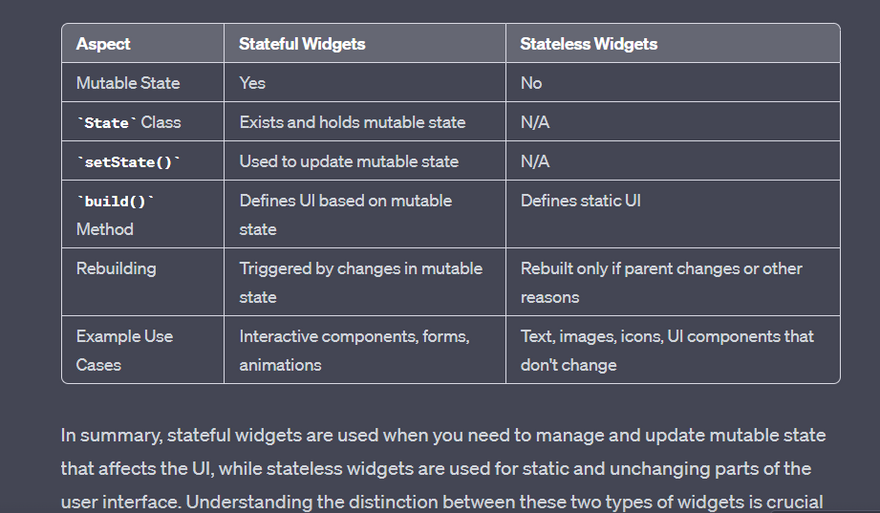In Flutter, widgets are the building blocks of the user interface. There are two main types of widgets: stateful widgets and stateless widgets. These two types of widgets serve different purposes in managing how the user interface is constructed and updated.
Stateful Widgets:
Stateful widgets are widgets that can change over time based on user interactions, data updates, or other events. They have an associated mutable state object that can be modified, and changes to this state trigger the rebuilding of the widget's user interface.
Key characteristics of stateful widgets:
- They implement the StatefulWidget class and override the createState() method to return an instance of the corresponding state class.
- The mutable state is stored in the state object and can be modified using the setState() method.
- When the state changes, the setState() method is called, and the framework schedules a rebuild of the widget's user interface.
- Examples of stateful widgets include forms, interactive elements, and components that need to react to changing data . Stateless Widgets: Stateless widgets are widgets that do not change their properties once they are created. They are immutable and represent parts of the user interface that remain constant throughout the widget's lifetime.
Key characteristics of stateless widgets:
- They implement the StatelessWidget class and override the build() method to define the widget's user interface.
- They do not have an associated mutable state object.
- Once a stateless widget is built, it remains the same until it's recreated due to changes in its parent widget or other factors.
- Examples of stateless widgets include text, images, icons, and other static UI elements . Here's a simplified comparison


Top comments (0)